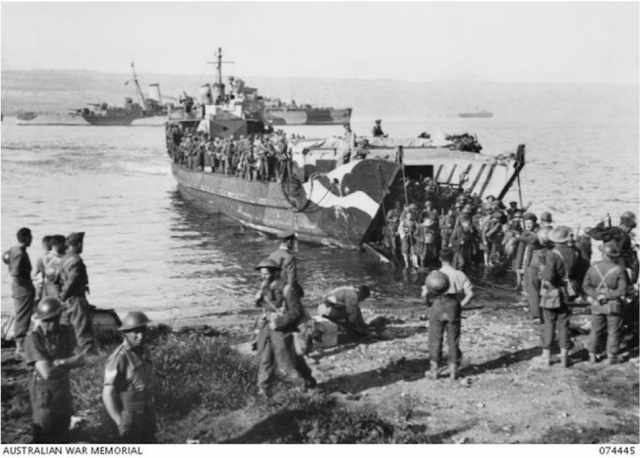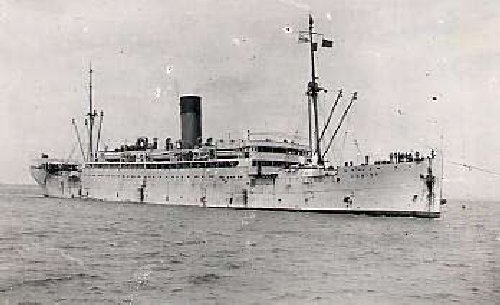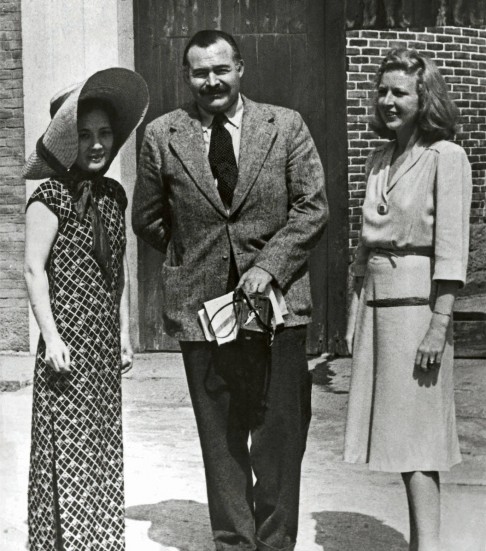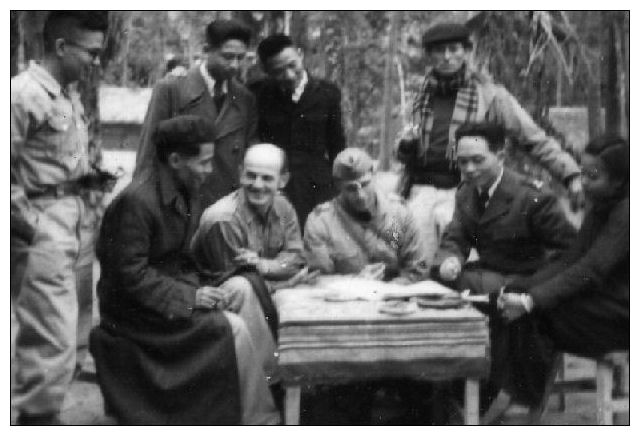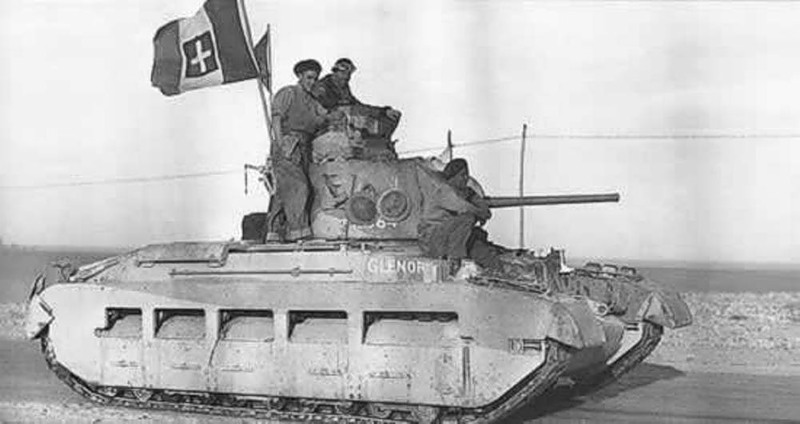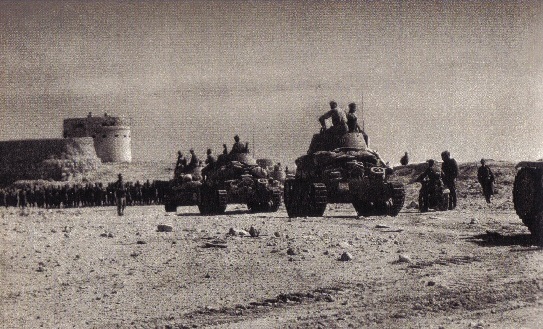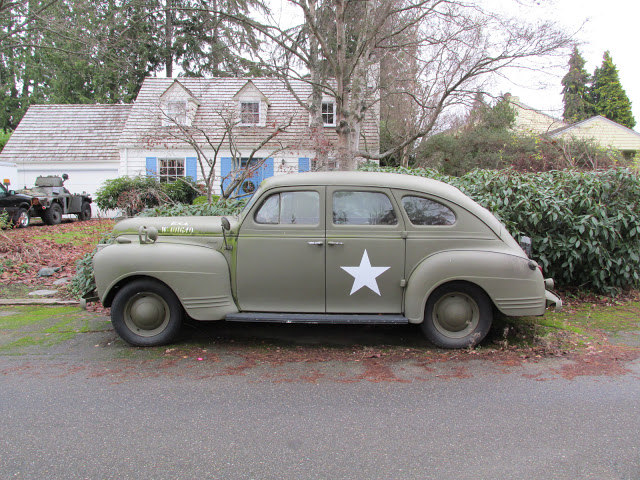Tuesday 20 January 1942
Holocaust: In the Berlin suburb of Wannsee, director of the Reich Main Security Office SS-Obergruppenführer Reinhard Heydrich presides over a meeting on 20 January 1942 that has long-term consequences for millions of people. The meeting lasts only about ninety minutes, and in that time Heydrich speaks for about an hour, with the remainder of the time devoted to questions and informal discussion. As is typical during such meetings within the Third Reich, the conclusions and directives of the meeting have been formulated previously, and the meeting itself is more for informational purposes than arriving at a conclusion. At the conclusion of the meeting, Heydrich instructs SS-Obersturmbannführer (Lieutenant Colonel) Adolf Eichmann to draft a summary (or protocol) of the meeting that would convey the gist of the meeting's conclusions without being too explicit about who said what or unnecessary details. There is unanimous approval among the fifteen participants on the program set forth. The most general conclusion of the Wannsee Conference is that European Jewry must be exterminated and that this would be accomplished under the Third Reich primarily in extermination camps located in "the East."
The Wannsee Conference occurs to begin implementing the "final solution of the Jewish question" ordered by Reichsmarschall Hermann Goering in a letter dated 31 July 1941. The protocol is only a little less vague than Goering's original order but does make clear that this "final solution" would involve millions of deaths. The exact procedure is left open to future refinements, but able-bodied Jews are to be used for their labor before eventually eliminating them. The intentional vagueness of the protocol is common within the Third Reich in situations where everyone tacitly understands that horrible consequences for many fellow human beings are not only intended but to be embraced. The top leaders such as Goering, Reichsführer-SS (Reich Leader SS) Heinrich Himmler, and Reich Foreign Minister Joachim Ribbentrop do not attend in person. Instead, they send representatives to "protect their interests," which is a common practice in staff meetings which may impinge on Third Reich fiefdoms. There is a heavy representation by the Schutzstaffel (SS), which is to be responsible for carrying out the exterminations. As is also typical, only a limited number of copies (30) of the protocol are prepared and almost all copies are destroyed before the end of the war. However, at least one copy (that of Martin Luther) survives to be discovered in 1947. Some people date the beginning of the Holocaust in its most virulent form from the Wannsee Conference.
The fierce battle west of Yong Peng on the Malay Peninsula to hold open a line of retreat for Commonwealth troops further north continues on 20 January 1942. At dawn, the 3/16th Punjab Regiment, commanded by Lieutenant Colonel Henry Moorhead, launches a desperate attempt to retake a critical bridge at Parit Salong which the British had been forced to surrender on the 19th. However, there is utter confusion in the area, and by the time they reach the bridge, Moorhead's troops come under friendly fire by nearby British troops of the 53rd Brigade. The Japanese then attack. Moorhead is killed and the counterattack, leaving the bridge in Japanese hands. Meanwhile, Muar Force (primarily 45th Indian Brigade) under Australian Lieutenant-Colonel Charles Anderson approaches the bridge from the north during a very costly retreat in men and equipment without any idea that it is now held by the Japanese. Anderson and his men fight desperately throughout the day, and Anderson personally leads a bayonet charge to get through a Japanese roadblock. Muar Force plans to cross the Parit Salong bridge at daybreak on the 21st.
The fierce battles on the Bataan Peninsula in the Philippines continue primarily in the center of the line. The main Japanese attacks are on the western flank of II Corps, which defends the eastern half of the defensive line along the neck of the peninsula. In the I Corps sector to the west, the most intense fighting dies down as the Japanese pull back and prepare for a coordinated attack. However, the Japanese continue to attempt to infiltrate troops in the central Mount Silanganan area.
A large Japanese invasion fleet led by two aircraft carriers - Akagi and Kaga - under the command of Vice-Admiral Shigeyoshi Inoue approaches New Ireland and New Britain in the Australian Territory of New Guinea. There are other Japanese ships already in place off the coast that have been launching constant attacks. The Japanese objective is the naval base at Rabaul. The Japanese have been attacking the port with multiple waves of aircraft every day and plan on invading on the 21st. Today, ninety Japanese planes attack, and RAAF No. 24 Squadron loses six of eight obsolete Wirraway fighters in a futile attempt to stop them.
The Japanese issue a demand for surrender to the Dutch Balikpapan, Borneo, Garrison Commander. They require that the Dutch surrender the oil refinery installation there intact. The Dutch refuse and prepare to defend it. Allied aerial reconnaissance spots a Japanese convoy in the Makassar Strait apparently heading toward Balikpapan.
Eastern Front: In the Crimea, the German 30th and 42nd Corps reach the Parpach Narrows after a brisk advance that already has recovered the port of Feodosia. The narrow front enables the Red Army troops under General Kozlov to hold here, and both sides quickly begin constructing fortifications. This ends the immediate sequence of events put into motion by the Red Army landings near Kerch in late December 1941. Both sides can claim a victory of sorts, but neither side has accomplished its main objectives (the Red Army to relieve Sevastopol, the Wehrmacht to clear the entire Crimea). Both intend to resume offensive operations after rebuilding their strength. Overall, over the last five days of the German counterstroke, the Red Army's 44th Army has lost about 6700 troops killed, lost 85 tanks, and lost about 10,000 prisoners and 177 guns. The Germans have lost 223 men killed or missing and 995 casualties overall. The recent battles have reinforced the general summer trend of the Germans winning limited objectives at a relatively small cost, but with the Red Army preventing far greater defeats at a very heavy cost. However, farther north around Moscow, the Red Army has completely turned the tables on the Germans and continues its counteroffensive.
Battle of the Mediterranean: Having just received a large number of supplies at Tripoli on the 20th, which he has had unloaded and put into the line with his usual extreme speed, Lieutenant General Erwin Rommel now is ready to launch the counteroffensive that he has been planning in Libya. As is his usual practice, Rommel does not request permission from Rome for his attack. This prevents Allied "Ultra" codebreakers at Bletchley Park from learning of his plans. The British troops at the front do not expect a counterattack so soon after the successful Operation Crusader and are not in good defensive positions. Rommel plans to launch his attack from El Agheila early on the 21st.
US Military: United States Secretary of War Henry L. Stimson notes in his diary that Pearl Harbor was "no longer a safe advance base for the Navy under the conditions of modern air and sea warfare." This reflects pessimism within the US Navy ever since Pearl Harbor about holding the Hawaiian Islands against a determined Japanese attack. Others within the US military, however, remain determined to hold Hawaii because it is the only base capable of sustaining an offensive against the Japanese. The War Department also is concerned about how to feed the 250,000 civilians on the island in addition to military personnel. Emergency food shipments have begun from San Francisco and are making headway in relieving that issue, but it remains a concern.
President Roosevelt signs an Executive Order establishing Daylight Savings Time to go into effect on 9 February and remain in effect for the remainder of the war.
1942
January 1942
January 1, 1942: Declaration By United Nations
January 2, 1941: Manila Falls to Japan
January 3, 1942: ABDA Command Announced
January 4, 1942: MacArthur on His Own in the Philippines
January 5, 1942: Soviets Plan General Offensive
January 6, 1942: US Army in Europe
January 7, 1942: Soviet General Offensive Opens
January 8, 1942: Hitler Sacks Hoepner
January 9, 1942: Battle of Dražgoše
January 10, 1942: Building the Jeep
January 11, 1942: Japan Takes Kuala Lumpur
January 12, 1941: Rommel Plans Counterattack
January 13, 1942: First Ejection Seat Use
January 14, 1942: Operation Drumbeat First Sinking
January 15, 1942: U-Boat Off NYC
January 16, 1942: Carole Lombard Crash
January 17, 1942: British Take Halfaya Pass
January 18, 1942: Soviet Paratroopers in Action
January 19, 1942: FDR Approves Atomic Bomb
January 20, 1942: The Wannsee Conference
January 21, 1942: Parit Sulong Bridge Battle
January 22, 1942: Parit Sulong Massacre
January 23, 1942: Japan Takes Rabaul
January 24, 1942: Battle of Makassar Strait
January 25, 1942: Kholm Surrounded
January 26, 1942: GIs Land in Europe
January 27, 1942: Battle of Endau
January 28, 1942: Rommel Takes Benghazi
January 29, 1942: First US Coast Guard Ship Sunk
January 30, 1942: Singapore Isolated
January 31, 1942: Army Group South Averts Disaster
2020
 |
| The site of the Wannsee Conference held on 20 January 1942. |
 |
| The Yoshida Battalion ambushing the retreating British troops in Parit Sulong on 20 January 1942. Credit: Takao Fusayama. |
The fierce battles on the Bataan Peninsula in the Philippines continue primarily in the center of the line. The main Japanese attacks are on the western flank of II Corps, which defends the eastern half of the defensive line along the neck of the peninsula. In the I Corps sector to the west, the most intense fighting dies down as the Japanese pull back and prepare for a coordinated attack. However, the Japanese continue to attempt to infiltrate troops in the central Mount Silanganan area.
 |
| A Japanese D3A1 EII-206 takes off from Zuikaku on 20 January 1942 to attack Rabaul. |
The Japanese issue a demand for surrender to the Dutch Balikpapan, Borneo, Garrison Commander. They require that the Dutch surrender the oil refinery installation there intact. The Dutch refuse and prepare to defend it. Allied aerial reconnaissance spots a Japanese convoy in the Makassar Strait apparently heading toward Balikpapan.
 |
| "Western Desert, Egypt. 20 January 1942. Flying over Halfaya soon after the surrender of the garrison on 17 January 1942, an Air Ministry photographer took this aerial photograph which shows knocked out tanks, armored vehicles, and emplacements. To the right can be seen the graves of members of the garrison." Australian War Memorial MED0306. |
 |
| "Vice-Admiral Sir Ralph Leatham, KCB, the new Vice Admiral for Malta, saying goodbye to Admiral Sir Wilbraham Ford, KCB, KBE (right) who is leaving Malta." 20 January 1942. © IWM (A 7230). |
 |
| "The ensign of HMS QUEEN ELIZABETH, the flagship of the Mediterranean Fleet, lowered to half-mast for the funeral of HRH The Duke of Connaught." 20 January 1942. © IWM (A 8016). |
President Roosevelt signs an Executive Order establishing Daylight Savings Time to go into effect on 9 February and remain in effect for the remainder of the war.
 |
| "Gun crews of the port gun turrets sponging out the barrels of the 4.5 guns. Two battleships are in line astern" Aboard HMS Victorious off Hvalfjord, Iceland on 20 January 1942. The Royal Navy is in the middle of a search for German battleship Tirpitz, which is believed to be at sea. © IWM (A 7277). |
Attendees at the Wannsee Conference of 20 January 1942:
- SS-Obergruppenführer (Lieutenant-General) Reinhard Heydrich, Chief of the RSHA, Deputy Reich Protector of Bohemia and Moravia, Presiding
- SS-Gruppenführer (Major-General) Otto Hofmann, Head of the SS Race and Settlement Main Office (RuSHA)
- SS-Gruppenführer (Major-General) Heinrich Müller aka "Gestapo Müller," Chief of Amt IV (Gestapo), Reich Main Security Office (RSHA)
- SS-Oberführer (Senior Colonel) Dr. Karl Eberhard Schöngarth, Commander of the SiPo and the SD in the General Government (Polish Occupation Authority)
- SS-Oberführer (Senior Colonel) Dr. Gerhard Klopfer, Permanent Secretary, NSDAP Party Chancellery
- SS-Obersturmbannführer (Lieutenant Colonel) Adolf Eichmann, Head of Referat IV B4 of the Gestapo, Recording Secretary
- SS-Sturmbannführer (Major) Dr. Rudolf Lange, Commander of the SiPo and the SD for Latvia; Deputy Commander of the SiPo and the SD for the RKO, Head of Einsatzkommando 2
- Dr. Georg Leibbrandt, Reichsamtleiter (Reich Head Office), Reich Ministry for the Occupied Eastern Territories
- Dr. Alfred Meyer, Gauleiter (Regional Party Leader), State Secretary, and Deputy Reich Minister, Reich Ministry for the Occupied Eastern Territories
- Dr. Josef Bühler, State Secretary, General Government (Polish Occupation Authority)
- Dr. Roland Freisler, State Secretary, Reich Ministry of Justice
- SS-Brigadeführer (Brigadier General) Dr. Wilhelm Stuckart, State Secretary, Reich Interior Ministry
- SS-Oberführer (Senior Colonel) Erich Neumann, State Secretary, Office of the Plenipotentiary for the Four Year Plan
- Friedrich Wilhelm Kritzinger, Permanent Secretary, Reich Chancellery
- Martin Luther, Under-Secretary, Reich Foreign Ministry
 |
| Norwegian freighter Herstein, bombed and sunk at Rabaul on 20 January 1942 by dive bombers flying from Japanese aircraft carrier Shokaku. |
1942
January 1942
January 1, 1942: Declaration By United Nations
January 2, 1941: Manila Falls to Japan
January 3, 1942: ABDA Command Announced
January 4, 1942: MacArthur on His Own in the Philippines
January 5, 1942: Soviets Plan General Offensive
January 6, 1942: US Army in Europe
January 7, 1942: Soviet General Offensive Opens
January 8, 1942: Hitler Sacks Hoepner
January 9, 1942: Battle of Dražgoše
January 10, 1942: Building the Jeep
January 11, 1942: Japan Takes Kuala Lumpur
January 12, 1941: Rommel Plans Counterattack
January 13, 1942: First Ejection Seat Use
January 14, 1942: Operation Drumbeat First Sinking
January 15, 1942: U-Boat Off NYC
January 16, 1942: Carole Lombard Crash
January 17, 1942: British Take Halfaya Pass
January 18, 1942: Soviet Paratroopers in Action
January 19, 1942: FDR Approves Atomic Bomb
January 20, 1942: The Wannsee Conference
January 21, 1942: Parit Sulong Bridge Battle
January 22, 1942: Parit Sulong Massacre
January 23, 1942: Japan Takes Rabaul
January 24, 1942: Battle of Makassar Strait
January 25, 1942: Kholm Surrounded
January 26, 1942: GIs Land in Europe
January 27, 1942: Battle of Endau
January 28, 1942: Rommel Takes Benghazi
January 29, 1942: First US Coast Guard Ship Sunk
January 30, 1942: Singapore Isolated
January 31, 1942: Army Group South Averts Disaster
2020





